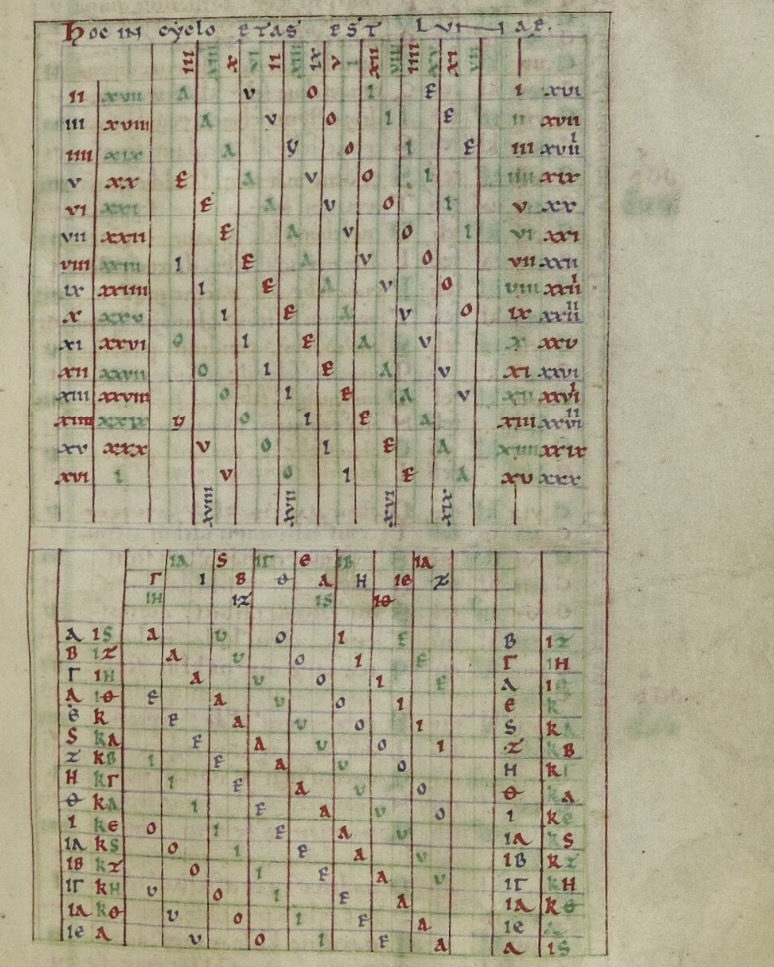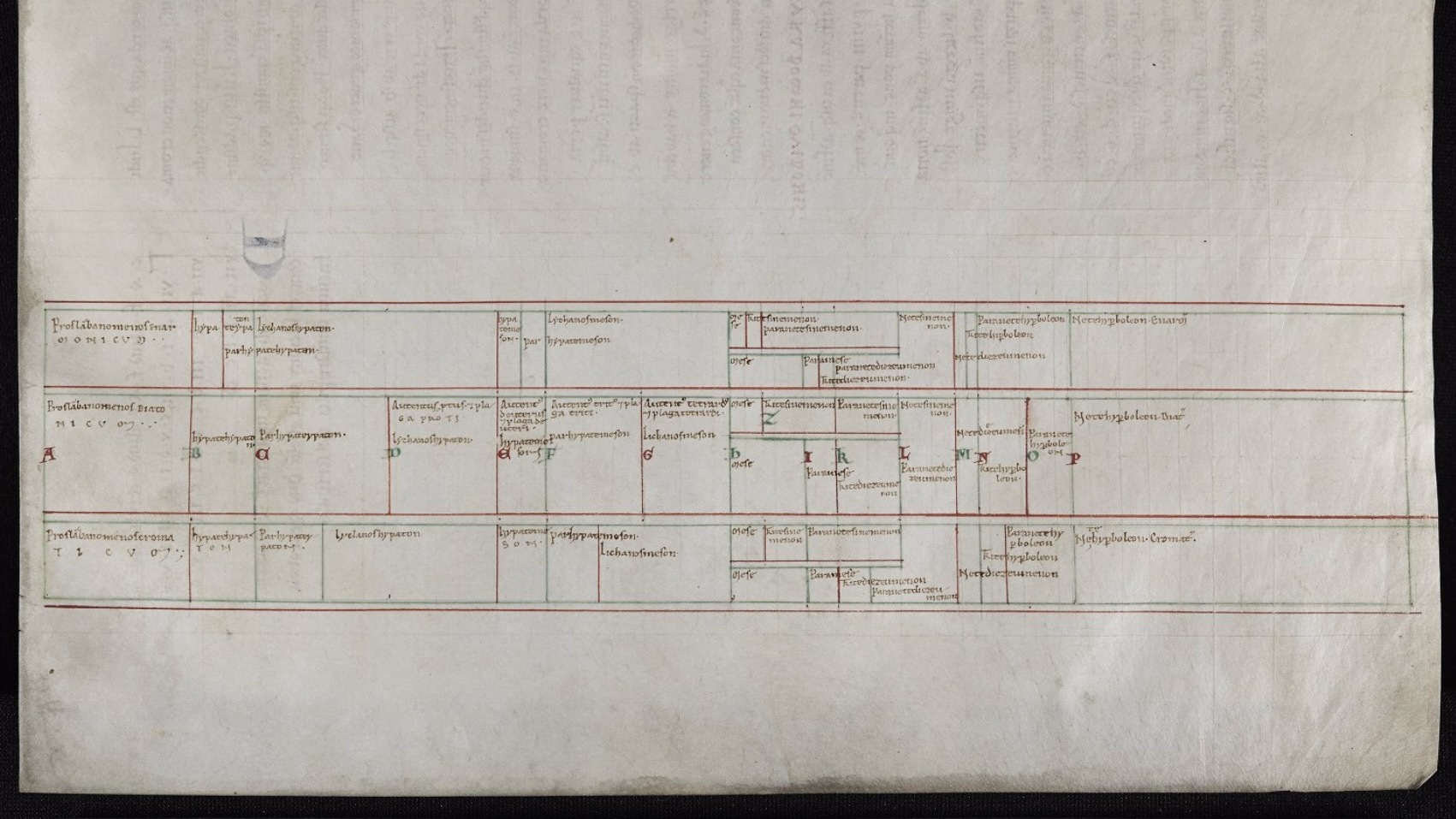Do You Hear What I Hear? The Audible And Inaudible In Medieval Music
Do You Hear What I Hear? The Audible and Inaudible in Medieval Music
This story is part of an ongoing series of editorials in which HMML curators and catalogers examine how specific themes appear across HMML’s digital collections. On the theme of Music, Dr. Jennifer Carnell has this story from the Western European collection.
Among HMML’s microfilms of the Durham Cathedral Library in England is a compilation of treatises in a codex known at HMML as England 10 (Durham MS. Hunter 100). This book is divided into two parts: the first is rather mathematical, instructing the reader on how to calculate hours, days, liturgical feasts, and movements of the stars; and the second part is medicinal, describing the human body, diseases, and herbal cures.

To a modern Western reader this book has a scientific focus, and yet inserted between tables and computational descriptions is a short excerpt from a musical treatise by Guido of Arezzo that details the use of an instrument called the monochord. At first glance, this inclusion of music seemingly disrupts the scientific unity of the compilation. However, if we consider a medieval European worldview, this musical treatise in fact contributes a further sense of harmony to the collection of texts.
Math and Music
Many scholars in medieval Western Europe saw the world as inherently organized by an intelligent God using underlying mathematical principles. This mathematical rationality could be understood aurally through music, which is built on the relationships between notes—that is, ratios.
To demonstrate the mathematical principles of music, medieval scholars often turned to the monochord, an instrument with a single string (the name in fact comes from the ancient Greek words mónos, “one,” and khordá, “string”). In medieval Europe, the instrument was largely used for educational purposes, training members of monastic choirs on the basic principles of chant. A musician can find a full scale on the string by placing a moveable bridge halfway along the string, two-thirds along the string, three-quarters, and so on. In this way, notes that harmonize with one another are all ratios of one another.

From a mathematical perspective, a description of the monochord among the treatises of England 10 is not so out of place. However, there might be a larger purpose to its placement in the book.
Harmonious Balances
The monochord passage seems to serve as an introduction to the mathematical treatises. It is preceded by many tables, diagrams, calendars, and comments on the use of those tables—in other words, what we might think of as appendices. It is only after the text on the monochord that the mathematical treatises start. The early positioning of the monochord text may attest to the importance of music in understanding the rest of the book’s content.
The famed Roman philosopher Boethius, who helped transmit Greek learning to the Middle Ages, wrote in his De institutione musica that there are harmonious balances of the physical and spiritual realms—in other words, inaudible music. Audible music, made by instruments and voice, was considered the lowest form of music because it could be corrupted, while inaudible music was higher and purer. These higher forms were both human—found in the harmony between the body and the soul—and celestial, made by the planets as they wandered the skies at their own speeds and frequencies. In this way, the study of music was inseparable from the study of science.
In the manuscript England 10, the full scale is represented: a passage on the lowest form of music (the musical instrument) leads into treatises on the highest form of music (the planets) followed by treatises on the middle form of music (the human physiology). The monochord offers a fundamental backdrop to understanding other harmonious structures, as well as the harmonious organization of the manuscript itself.




